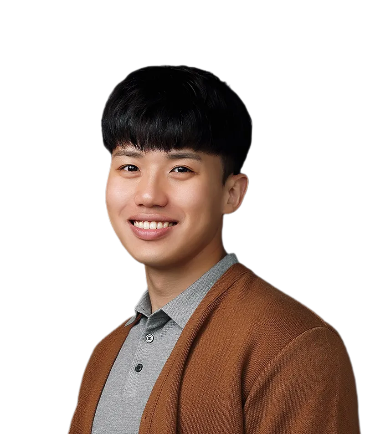|
|
|
|
|
韩国光州科学技术学院教授讲述视觉生态学启发下的机器人视觉系统进展:生物启发式相机 |
|
|

直播时间:2024年9月27日(周五)20:00—21:30
直播平台:

科学网APP
https://weibo.com/l/wblive/p/show/1022:2321325083219342262419
(科学网微博直播间链接)

科学网微博

科学网视频号
【直播简介】
北京时间2024年9月27日晚八点,iCANX Talks 第205期将在iCANX平台上线!本期我们邀请到了光州科学技术学院Young Min Song教授作为主讲嘉宾,韩国科学技术研究院Changsoon Choi、釜山大学Gil Ju Lee也将进行分享!新南威尔士大学Shchnology Nath、北京理工大学Ziyuan Li 两位教授担任研讨嘉宾,澳大利亚国立大学 Lan Fu教授担任主持人。
这将是一场汇聚顶尖学者的盛会,共同探讨前沿科技与学术挑战!更多精彩,敬请期待!
【嘉宾介绍】

Young Min Song
光州科学技术学院
Inspiration from visual ecology for advancing robotic vision systems : Bio-inspired Cameras
[ABSTRACT]
In the field of robotics, particularly aimed at enabling robots to autonomously navigate and seamlessly collaborate with humans, the significance of unconventional imaging techniques and efficient data processing capabilities is paramount. The dynamic array of environments encountered by robots, along with the multitude of tasks they are assigned, presents numerous challenges that necessitate diverse visual functionalities. Consequently, the development of multifunctional robotic vision systems has become indispensable. The rich diversity inherent in the vision systems of animals, honed over evolutionary epochs to meet their survival demands across varied habitats, serves as a profound source of inspiration for designing sophisticated vision systems tailored for robotic platforms with complex missions in unstructured environments. This talk summarizes recent advances in cutting-edge multifunctional robotic vision systems, drawing inspiration from the distinctive characteristics of natural ocular structures, with a particular focus on bio-inspired electronic eyes.
在机器人技术领域,特别是旨在使机器人能够自主导航并与人类无缝协作方面,非传统成像技术和高效的数据处理能力的重要性至关重要。机器人遇到的动态环境范围以及它们被分配的众多任务,提出了许多挑战,这些挑战需要多样化的视觉功能。因此,开发多功能机器人视觉系统已成为不可或缺的一部分。动物视觉系统固有的丰富多样性,经过进化时期的磨练,以满足它们在不同栖息地的生存需求,为设计适用于复杂任务和非结构化环境中的机器人平台的复杂视觉系统提供了深刻的灵感来源。本次演讲总结了近期在尖端多功能机器人视觉系统方面的最新进展,借鉴了自然眼部结构的独特特征,特别关注了受生物启发的电子眼。
[BIOGRAPHY]
Dr. Young Min Song is a GIST distinguished professor in the School of Electrical Engineering and Computer Science and AI Graduate School at the Gwangju Institute of Science and Technology (GIST), Korea. Before joining the GIST, he was an assistant professor at the Pusan National University from 2013 to 2016. He received a M.S. and Ph.D. in Information and Communications from the Gwangju Institute of Science and Technology (GIST) in 2006 and 2011, respectively, after a B.S. degree in Biomedical Engineering from Yonsei University in 2004. From 2011 to 2013, he was a postdoctoral research associate in the Department of Materials Science and Engineering at the University of Illinois at Urbana–Champaign. Dr. Young Min Song’s research interests include advanced optoelectronic devices/systems, multifunctional nanophotonics, and optical healthcare systems. He is a senior member of Optica, a member of SPIE, and MRS. He is serving as a senior editor of the IEEE Photonics Journal and an editorial board member of the Journal of Optical Microsystems (JOMs) and Soft Science. He is a member of the Young Korea Academy of Science and Technology(Y-KAST), Korea.
Young Min Song博士是韩国光州科学技术院(GIST)电气工程与计算机科学学院和人工智能研究生院的杰出教授。在加入GIST之前,他从2013年到2016年在韩国釜山国立大学担任助理教授。他在2004年获得延世大学生物医学工程学士学位后,于2006年和2011年分别在光州科学技术院(GIST)获得信息与通信硕士和博士学位。2011年至2013年,他在伊利诺伊大学厄巴纳-香槟分校材料科学与工程系担任博士后研究助理。宋永民博士的研究兴趣包括先进的光电子器件/系统、多功能纳米光子学和光学医疗系统。他是Optica的高级会员,SPIE和MRS的会员。他担任IEEE光子学杂志的高级编辑,以及光学微系统杂志(JOMs)和Soft Science的编辑委员会成员。他是韩国科学技术青年学院(Y-KAST)的成员。

Changsoon Choi
韩国科学技术研究院
Bio-inspired electronic eyes for in-sensor computing
[ABSTRACT]
Bio-inspired electronic eyes offer efficient solutions for image acquisition, particularly with their compact designs and multifunctional capabilities. However, these systems typically demand resource-intensive computations for executing robotic vision tasks, leading to high power consumption and data latency. In this talk, we present advanced bio-inspired electronic eyes with in-sensor processing capabilities that streamline image processing workflows, enhancing the efficiency and accuracy of robotic vision applications. Our first innovation is a curved neuromorphic image sensor that performs in-sensor contrast enhancement using a synapse-like photoresponse. Additionally, we developed an anti-distortion bio-inspired camera that corrects image distortion through inhomogeneous pixel engineering, referred to as configurational in-sensor computing. These advancements bridge the gap between bio-inspired electronic eyes and in-sensor computing, highlighting their transformative potential in the field of robotics.
受生物启发的电子眼为图像采集提供了高效的解决方案,特别是它们的紧凑设计和多功能能力。然而,这些系统通常需要资源密集型的计算来执行机器人视觉任务,导致高功耗和数据延迟。在本次演讲中,我们介绍了具有传感器内处理能力的先进受生物启发的电子眼,这些能力简化了图像处理工作流程,提高了机器人视觉应用的效率和准确性。我们的第一项创新是一种曲面神经形态图像传感器,它使用类似突触的光响应在传感器内进行对比度增强。此外,我们还开发了一种通过非均匀像素工程来校正图像畸变的抗畸变受生物启发的相机,称为配置型传感器内计算。这些进步弥合了受生物启发的电子眼和传感器内计算之间的差距,突出了它们在机器人领域的变革潜力。
[BIOGRAPHY]
Dr. Choi received his B.S. degree (2012) from the Department of Material Science and Engineering at the Seoul National University and his M.S. degree (2014) and his Ph.D. degree (2020) from the School of Chemical and Biological Engineering at the Seoul National University. He is currently a senior researcher of Center for Quantum Technology, Post-silicon Semiconductor Institute (PSI), Korea Institute of Science and Technology (KIST). His research interests include bio-inspired electronic eyes with in-sensor computing capabilities.
崔博士于2012年获得首尔国立大学材料科学与工程系学士学位,2014年和2020年分别获得首尔国立大学化学与生物工程学院的硕士和博士学位。他目前是韩国科学技术研究院(KIST)后硅半导体研究所量子技术中心的高级研究员。他的研究兴趣包括具有传感器内计算能力的受生物启发的电子眼。

Gil Ju Lee
釜山大学
Amphibious, panoramic bio-inspired imaging system
[ABSTRACT]
The study of biological visual systems has led to the creation of various artificial vision systems, modeled after the eyes of humans (for land environments), insects (for terrestrial habitats), and fish (for aquatic settings). However, efforts to develop systems that can operate in both land and water environments remain relatively few. Additionally, bioinspired electronic eyes typically have a limited field of view, capped at around 180° in a hemispherical range. In this talk, I will introduce an amphibious artificial vision system that offers a panoramic field of view, inspired by the structure and function of fiddler crab compound eyes. This system integrates a microlens array with a graded refractive index and a flexible, comb-shaped silicon photodiode array on a spherical surface. I will also present demonstration results on the systems amphibious and panoramic capabilities through optical simulations and imaging demonstrations in both air and water environments.
对生物视觉系统的研究促进了各种人工视觉系统的创造,这些系统模仿了人类(陆地环境)、昆虫(陆地栖息地)和鱼类(水生环境)的眼睛。然而,开发能在陆地和水环境中运行的系统的努力仍然相对较少。此外,受生物启发的电子眼通常具有有限的视野范围,大约在180°的半球范围内。在本次演讲中,我将介绍一种受招潮蟹复眼结构和功能启发的两栖全景视觉系统。该系统集成了具有梯度折射率的微透镜阵列和在球面上的柔性梳状硅光电二极管阵列。我还将通过光学模拟和在空气和水环境中的成像演示,展示系统在两栖和全景能力方面的演示结果。
[BIOGRAPHY]
Dr. Lee received his B.S. degree in 2016 from the Department of Electronics Engineering at Pusan National University. He earned his Ph.D. in 2021 from the School of Electrical Engineering and Computer Science at Gwangju Institute of Science and Technology (GIST). Dr. Lee is currently an assistant professor in the School of Electrical and Electronics Engineering at Pusan National University. His research interests are centered on the development of bio-inspired imaging systems, advanced photonic devices, RF-photonics, and radiative cooling.
李博士于2016年获得釜山国立大学电子工程系学士学位。他在2021年获得了光州科学技术院(GIST)电气工程与计算机科学学院的博士学位。李博士目前是釜山国立大学电气与电子工程学院的助理教授。他的研究兴趣集中在开发受生物启发的成像系统、先进的光子器件、射频光子学和辐射冷却。
特别声明:本文转载仅仅是出于传播信息的需要,并不意味着代表本网站观点或证实其内容的真实性;如其他媒体、网站或个人从本网站转载使用,须保留本网站注明的“来源”,并自负版权等法律责任;作者如果不希望被转载或者联系转载稿费等事宜,请与我们接洽。